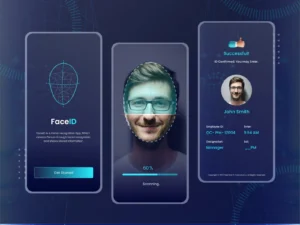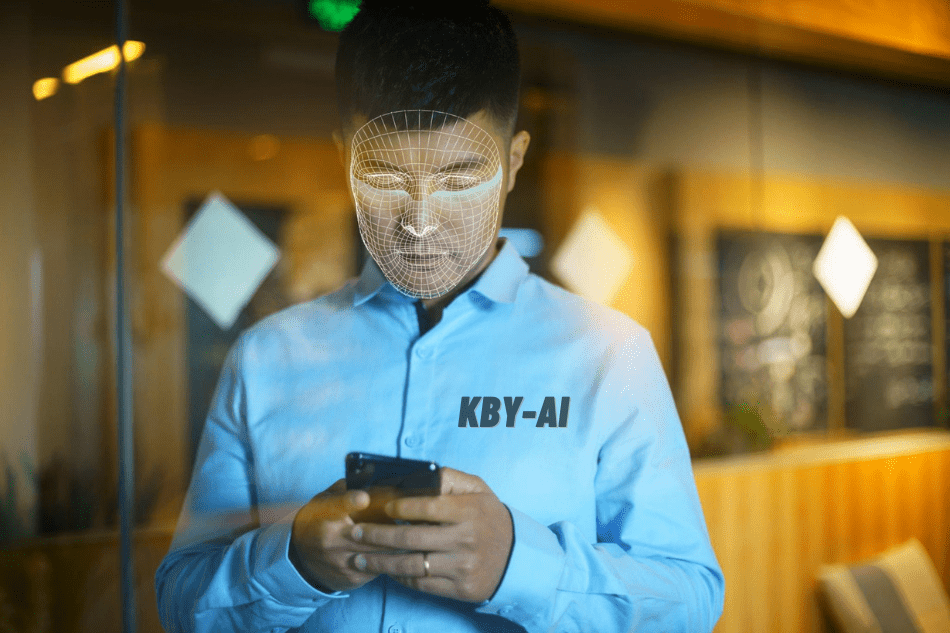Face fraud prevention SDK company specializes in developing software to prevent facial recognition systems from being deceived. These face fraud prevention SDKs ensure secure biometric authentication by distinguishing between real human faces and fake representations.
In the world of digital security, safeguarding systems against fraudulent access is crucial. Face fraud prevention SDK companies provide advanced solutions that protect individuals and organizations from the vulnerabilities associated with facial recognition technology. By integrating live detection techniques and motion analysis, these SDKs are designed to recognize and block attempts using photos, videos, or masks to trick a system.
This specialized software has become essential in various sectors, including finance, security, and personal device access, where ensuring the identity of users is of utmost importance. Trust in biometric security continues to grow as these companies advance their technology to outsmart increasingly sophisticated spoofing tactics.
Introduction To Face Fraud Prevention
Definition And Importance Of Anti-spoofing
Face fraud prevention is a set of measures and technologies designed to protect facial recognition systems from deception or falsification. These measures detect attempts at spoofing or hacking by distinguishing between genuine human traits and fake representations such as photos, videos, or masks. The importance of these protocols lies in their ability to maintain the integrity and reliability of biometric identification processes, which are widely used in various security-sensitive sectors including banking, personal electronics, and law enforcement.The Evolution Of Face Recognition Technologies
- Initial Phase: The basic face recognition systems relied solely on existing photographs, making them highly vulnerable to spoofing.
- Advancements: Over time, the introduction of 3D face mapping and liveness detection algorithms significantly enhanced security.
- Current Innovations: Integration of AI and machine learning has ushered in sophisticated systems capable of detecting even the most subtle hints of spoofing.
Challenges Posed By Spoofing Attacks
- Variety of Attack Vectors: Spoofing attacks can range from high-quality masks to deep fakes, making detection a constantly evolving challenge.
- Sophistication of Spoofers: As anti-spoofing technology advances, so does the complexity of attacks, necessitating a proactive defense approach.
- Balance of Security and Convenience: While enhancing security, it’s also vital to ensure that these measures do not become overly intrusive, maintaining a user-friendly experience.
The Rise Of Face Fraud Prevention SDK Companies

Market Drivers For Anti-spoofing Solutions
Anti-spoofing solutions are rapidly evolving to meet the demands of an increasingly security-conscious market. Key market drivers include:- Surging incidence of identity theft: With identity fraud cases on the rise, companies prioritize robust security solutions including face anti-spoofing.
- Adoption of biometric systems: As industries adopt biometric technology for authentication, the importance of preventing spoof attacks grows in tandem.
- Government regulations: Regulatory bodies across the globe are mandating stronger security protocols, propelling the demand for reliable anti-spoofing SDKs.
- Technological advancements: Advancements in artificial intelligence, machine learning, and live detection technologies fuel the evolution of these SDKs to offer near-impenetrable security measures.
Key Players In The Face Fraud Prevention SDK Market
The face fraud prevention SDK market has attracted a host of innovative companies, each contributing their expertise to the fight against digital fraud. Some of the key players include:| Company Name | Core Technologies | Industry Focus |
|---|---|---|
| FaceSec | 3D modeling, AI-based live detection | Finance, Government |
| BioIntelliGuard | Eye tracking and texture analysis | Healthcare, Retail |
| AuthentiVision | Behavioral biometrics, infrared scanning | Smart Homes, Consumer Electronics |
Case Studies: Success Stories Of Anti-spoofing Implementation
Adopting face fraud prevention technology has resulted in successful security enhancements for many organizations. Below are a few case studies that showcase this impact:- SecureBank: After implementing a sophisticated face anti-spoofing SDK, Secure Bank saw a 65% reduction in digital fraud cases, restoring customer confidence and cutting down on fraud-related costs.
- HealthCheck Clinic: By incorporating anti-spoofing measures in their patient identification system, HealthCheck Clinic not only bolstered data security but also improved patient trust and streamlined the check-in process, demonstrating the dual benefits of enhanced security and operational efficiency.
- GlobalTech Corporation: GlobalTech Corporation’s integration of an advanced anti-spoofing SDK into its employee access controls led to an all-time high in security protocol compliance, as well as a marked decrease in unauthorized access attempts. Their case exemplifies the value of anti-spoofing solutions in corporate environments.
Technologies Behind Face Fraud Prevention SDK’s
Liveness Detection Methods
Liveness detection is a critical feature within face fraud prevention SDKs, aiming to determine if the subject is a live person present at the time of capture or a fake representation. To achieve accurate detection, these face fraud prevention SDKs employ a myriad of techniques:- Texture Analysis: Evaluates the skin’s texture for signs of life, such as perspiration, and distinguishes between real skin and masks.
- Motion Analysis: Monitors involuntary human motions, including eye blinking or lip movements, to assess liveness.
- Challenge-Response Tests: Requires users to follow simple instructions, like head movements or facial expressions, confirming their presence.
Artificial Intelligence And Machine Learning In Anti-spoofing
Artificial Intelligence (AI) and Machine Learning (ML) serve as the intelligence hub within face fraud prevention SDKs. These innovative technologies enable the system to learn and distinguish between genuine and fraudulent facial features. Highlights of their application include:- Training on Diverse Datasets: AI algorithms are trained on various images and videos covering a wide range of spoofing attacks to improve accuracy.
- Anomaly Detection: ML models are adept at detecting patterns and anomalies, spotting irregularities that may indicate spoofing attempts.
- Continuous Learning: Over time, AI constantly evolves, learning from new spoofing techniques to stay ahead of fraudsters.
3d Face Mapping And Depth Sensing Technologies
3D face mapping and depth sensing are transformative in the battle against face spoofing. These technologies generate a precise 3D model of the user’s face, which is challenging to replicate with flat representations such as photos or videos. Key components include:- Structured Light Projection: Projects a pattern onto the face and analyzes distortions to build a depth map.
- Time-of-Flight (ToF) Sensors: Measure the time it takes for light to bounce back from the subject, constructing a detailed 3D map.
- Active Stereo Vision: Uses two cameras, similar to human binocular vision, to perceive depth and generate a 3D model.

Implementing Face Fraud Prevention SDK’s
Integration With Existing Security Frameworks
The primary concern when embedding face fraud prevention SDKs lies in the seamless integration with legacy systems. Opt for an SDK that works well with your current security stack.- Compatibility: Ensure the SDK supports the programming languages and platforms used by your existing systems.
- Scalability: Choose solutions that can handle increasing workloads without compromising performance.
- Modularity: A modular SDK can simplify maintenance and updates, offering a flexible approach to security.
User Experience Considerations
While security is paramount, the user experience (UX) should not be compromised. An SDK that contributes to a frictionless and intuitive user journey will garner positive reception. Aim for SDKs that:- Provide real-time feedback to guide users through the authentication process.
- Minimize the steps required to confirm identity, achieving a quick and efficient verification.
- Include clear instructions and user-friendly interfaces.
Future-proofing Anti-spoofing Measures
The threat landscape in cybersecurity is ever-evolving. One must not only address current challenges but also anticipate future tactics. Opt for an SDK that incorporates:- Machine Learning:
- Advanced machine learning algorithms are capable of adapting to new threat patterns, enhancing protection over time.
- Comprehensive Datasets:
- The effectiveness of an anti-spoofing system relies on diverse datasets used in its training. Ensure the SDK vendor employs a wide array of biometric data.
- Continuous Updates:
- Regular software updates are crucial to keep up with the latest security threats and provide ongoing refinement of the spoofing detection mechanisms.
Legal And Ethical Considerations
Privacy Laws Regulating Biometric Data
Biometric data is sensitive personal information that demands stringent regulation to protect individual privacy. Countries worldwide have implemented privacy laws that mandate various levels of consent, transparency, and right to access:- GDPR (General Data Protection Regulation) in the European Union rigorously controls the processing of biometric data, with a strong emphasis on user consent and data minimization.
- The Biometric Information Privacy Act (BIPA) in Illinois, USA, is notable for its stringent consent requirements and guidelines for data retention and protection.
- The Personal Information Protection and Electronic Documents Act (PIPEDA) applies to private sector organizations across Canada that collect, use, or disclose personal information in the course of commercial activities.
Ethical Implications Of Face Recognition And Anti-spoofing
Face recognition and anti-spoofing technologies raise significant ethical concerns. Secure and respectful deployment entails:- Acknowledging the right to privacy and preventing unauthorized surveillance.
- Transparency about data usage, storage, and sharing practices.
- Obtaining informed consent from users for the collection and use of their biometric data.
- Ensuring data security to protect against breaches and unauthorized access.
Ensuring Fairness And Mitigating Bias
Machine learning algorithms, like those used in face anti-spoofing, can inadvertently inherit bias, leading to unfair treatment of certain groups. To combat this, companies must:- Incorporate diverse datasets to train algorithms, reflecting a broad spectrum of demographics.
- Implement regular audits to identify and rectify any biases within the system.
- Ensure transparency in decision-making processes to allow for accountability and corrections when needed.
- Engage in ongoing research and collaboration with experts to understand the impacts of bias and refine the technology for fairness and accuracy.

The Future Landscape Of Face Fraud Prevention
Emerging Technologies In Anti-spoofing
The advent of groundbreaking technologies has huge implications for face anti-spoofing capabilities. Here are some innovations to watch:- Artificial Intelligence and Machine Learning: Advancements in AI algorithms are set to improve detection rates of spoofing attempts, learning from data to distinguish between real and fake faces with greater accuracy.
- 3D Facial Recognition: The integration of 3D mapping adds depth perception, which is much harder to replicate, thus enhancing security.
- Liveness Detection: Liveness features assess if a face in front of the camera is a live person, not a photo or video, by analyzing spontaneous human behavior such as blinking or head movements.
- Multi-spectral Imaging: This technology analyzes faces across different light spectrums, including infrared and ultraviolet, making it difficult for attackers to deceive the system.
Predictions For Sdk Enhancements
Looking ahead, we can anticipate several pivotal enhancements in Face Fraud Prevention SDKs:- Cross-platform Compatibility: SDKs will likely evolve to support a wider array of devices and operating systems, making face fraud prevention more accessible and versatile.
- Real-time Processing: Enhanced computing power and optimized algorithms will enable anti-spoofing checks to occur in real time, reducing friction for users while maintaining security.
- User Experience Optimization: SDKs will become more user-friendly, with less intrusive verification processes while maintaining a high level of security.
- Regulatory Compliance Features: As privacy regulations become stringent, SDKs will incorporate features to ensure compliance without sacrificing user experience.
The Role Of Anti-spoofing In Comprehensive Cybersecurity Strategies
Face raud prevention SDKs are becoming a linchpin in comprehensive cybersecurity strategies. Enterprises integrate these kits into their systems to curb the rise in identity theft, account takeovers, and other security breaches. Below are key points elucidating their expanding role:- Data Protection: By preventing unauthorized face recognition access, SDKs help safeguard sensitive user information.
- Continuous Authentication: Anti-spoofing tools contribute to continuous authentication mechanisms, ensuring users are constantly verified throughout their session.
- Compliance and Trust: Adhering to cybersecurity standards boost client confidence and meets industry-specific regulatory requirements.
- Scalability: As organizations grow, SDKs will scale to provide consistent security measures across an expanding user base and devices.
Frequently Asked Questions For Face Fraud Prevention SDK Company
What Is Face Fraud Prevention?
Face fraud prevention is a security feature that protects facial recognition systems from being tricked by fake faces or masks. It ensures that only live, real faces gain access.
What Is The Dataset For Face Fraud Prevention?
A dataset for face fraud prevention includes images or videos that help systems distinguish between genuine and fake biometric traits. These datasets train algorithms to detect presentation attacks or forgeries in biometric authentication systems.
Can Facial Recognition Systems Be Spoofed?
Yes, facial recognition systems can be tricked using various methods, such as photographs, masks, or sophisticated 3D models to mimic a person’s face.
What Is Anti-spoofing?
Anti-spoofing refers to measures taken to protect against fraudulent identification by confirming digital communication authenticity. It helps prevent impersonation and data manipulation in systems.
Conclusion
Selecting the right face fraud prevention SDK is crucial for your digital security needs. Trust in technology that protects your users and your reputation. Embrace top-tier solutions and fortify your systems against identity theft. Forge ahead with confidence; let a robust SDK safeguard your digital interactions.
Security is not just an option—it’s a necessity.


